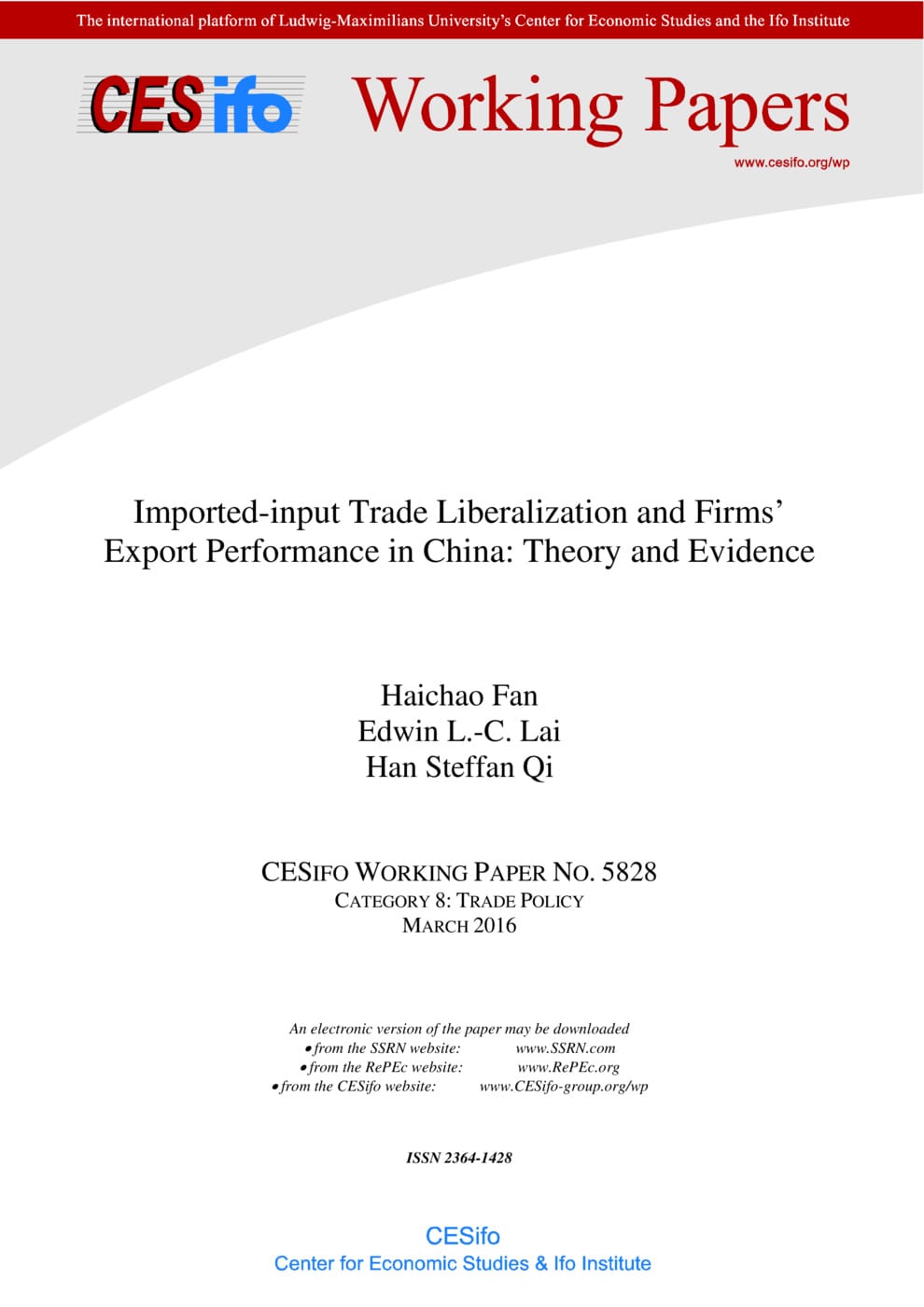Imported-input Trade Liberalization and Firms' Export Performance in China: Theory and Evidence
CESifo, Munich, 2016
CESifo Working Paper No. 5828

The literature on trade liberalization has recently shifted its attention from trade liberalization in imported final goods to studying the effects of trade liberalization in imported intermediate inputs. This emphasis fits very well the trade liberalization experience of China following its accession to the WTO in 2001. We build a multi-sector heterogenous-firm model with trade in both intermediate goods and final goods, and we ask: How do final-goods producers respond to trade liberalization in imported inputs? Do they respond differently across sectors? How do firms respond differently to trade liberalization in imported-outputs instead? We decompose the total effect of trade liberalization into those caused by inter-sectoral resource allocation (IRA) and by within-sector selection of firms according to productivity (which we call Melitz selection effect). It is the IRA effect that gives rise to differential impacts of trade liberalization in different sectors. These impacts include changes in the probability of entry into the export market, the fraction of firms that export and the share of export revenue. We test our hypotheses using Chinese firm-level data for the years after China’s accession to WTO in 2001. The results generally support our hypotheses.
Trade Policy
Industrial Organisation